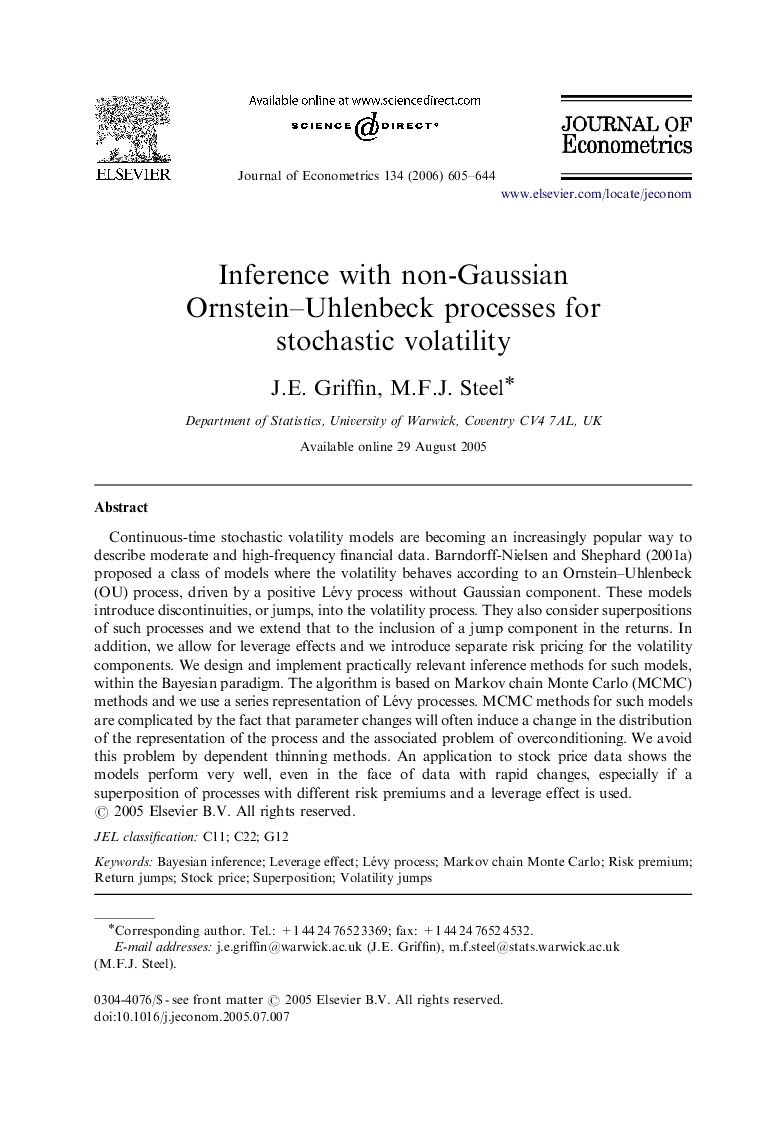| Article ID | Journal | Published Year | Pages | File Type |
|---|---|---|---|---|
| 5097446 | Journal of Econometrics | 2006 | 40 Pages |
Abstract
Continuous-time stochastic volatility models are becoming an increasingly popular way to describe moderate and high-frequency financial data. Barndorff-Nielsen and Shephard (2001a) proposed a class of models where the volatility behaves according to an Ornstein-Uhlenbeck (OU) process, driven by a positive Lévy process without Gaussian component. These models introduce discontinuities, or jumps, into the volatility process. They also consider superpositions of such processes and we extend that to the inclusion of a jump component in the returns. In addition, we allow for leverage effects and we introduce separate risk pricing for the volatility components. We design and implement practically relevant inference methods for such models, within the Bayesian paradigm. The algorithm is based on Markov chain Monte Carlo (MCMC) methods and we use a series representation of Lévy processes. MCMC methods for such models are complicated by the fact that parameter changes will often induce a change in the distribution of the representation of the process and the associated problem of overconditioning. We avoid this problem by dependent thinning methods. An application to stock price data shows the models perform very well, even in the face of data with rapid changes, especially if a superposition of processes with different risk premiums and a leverage effect is used.
Keywords
Related Topics
Physical Sciences and Engineering
Mathematics
Statistics and Probability
Authors
J.E. Griffin, M.F.J. Steel,
